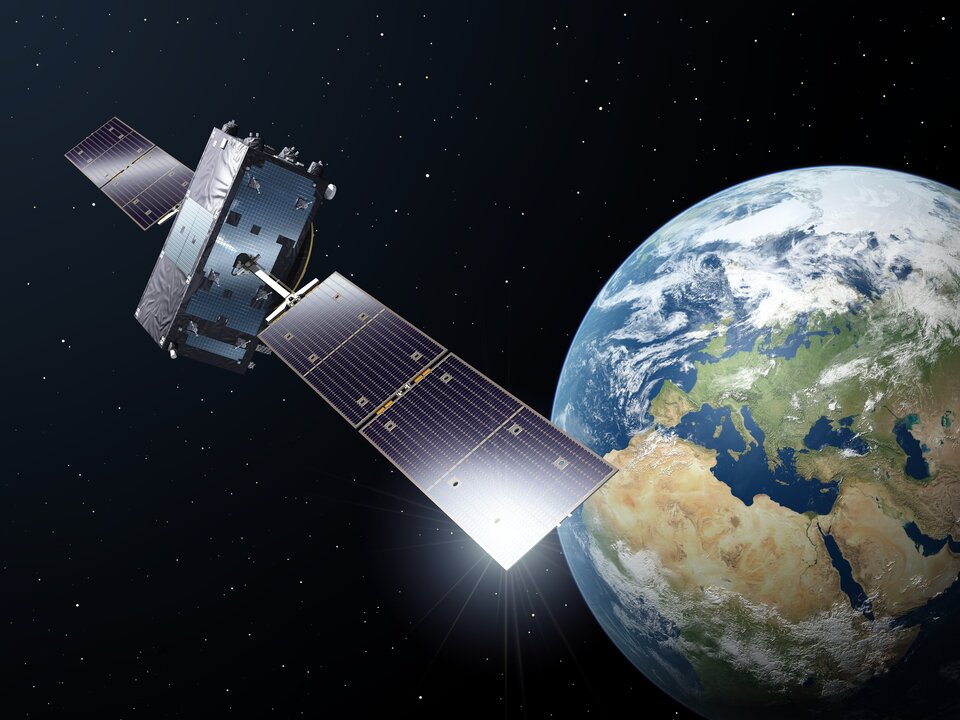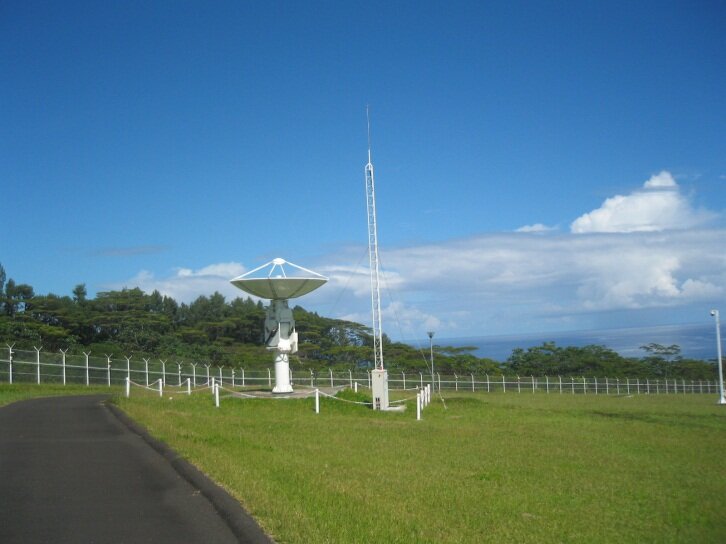Galileo system updated and back to work
The worldwide Ground Mission Segment providing all Galileo navigation messages has completed a full-scale hardware and software migration to version V2.0, and is now fully operational again.
The Ground Mission Segment was turned off on 26 January, allowing the migration to take place over the month of February. The following month was taken up with detailed checking by operations and system, concluding in a final ‘check point’ on 31 March to validate the successful migration.
“The upgrade of the Galileo Ground Mission Segment from V1.2 to V2.0 has provided better overall performance and availability, along with improved robustness, security and operability,” explains Martin Hollreiser, overseeing mission segment development for ESA, with Thales Alenia Space France as prime contractor.
“The overall outcome of our check point confirmed that the new GMS V2.0 migrated to the operational chain is a major improvement and no blocking issues were identified. An overall 25% performance improvement is confirmed.”
“The process began with the upgrade of the infrastructure hardware at Galileo’s control centre in Fucino, Italy, and remote sites disconnected from the system to be monitored locally.

“This physical process was followed by a software update, and then a full-scale test campaign before handing back to operations and resuming the nominal Galileo mission on 6 March.
“Three new sensor stations (Kiruna, Ascension and Azores) – used to monitor the satellite navigation signals – were also added to the operations chain, as well as a new uplink station (Papeete) – used to uplink corrections incorporated in the navigation message to the satellites for broadcast to the users.”

Galileo is Europe’s satellite navigation system. The accuracy of its positioning fixes ultimately comes down to accurate satellite orbit determination and timing measurements and corrections that are precise down to a few billionths of a second. A satnav receiver determines its position by calculating the time it takes for signals to arrive from multiple satellites in space.
To keep those timings sufficiently precise, the entire Galileo system can be thought of as one gigantic planetary-scale clock, with the Ground Mission Segment at its core, determining the exact satellite orbits and synchronising all the satellite and terrestrial elements of that clock: the relevant control centre is linked to a global network of ground stations (sensor and uplink stations).
Each of the Galileo satellites in space carries multiple atomic clocks on board, which, although very accurate, drift slightly over time. So sensor stations on the ground extract measurements from the satellites’ signals and send these to the Galileo control centre in Fucino, Italy. Here, processing takes place to derive very accurate satellite orbits and clock synchronisation.
Any necessary corrections are then built into an updated navigation message that is then transmitted to the satellites via a set of five uplink stations. The satellites themselves then rebroadcast these corrections down to the users, to be automatically interpreted by receivers to maintain service precision.

During the upgrade, this regular updating of navigation messages no longer took place, so the accuracy of the Galileo signals to users slowly degraded. Users were informed of this process through a flag in the signal itself, as well as through the online ‘Notice Advisory to Galileo Users’ (NAGU) notification process.
An updated NAGU has been issued to inform users that Galileo services are back. Right now the signals are being used for technical testing, with early services for the public projected for 2016.
A further Galileo Ground Mission Segment update is foreseen for the end of this year,” Martin concludes. “But this time the upgrade should be executed in a seamless manner, with no interruption of services.”





